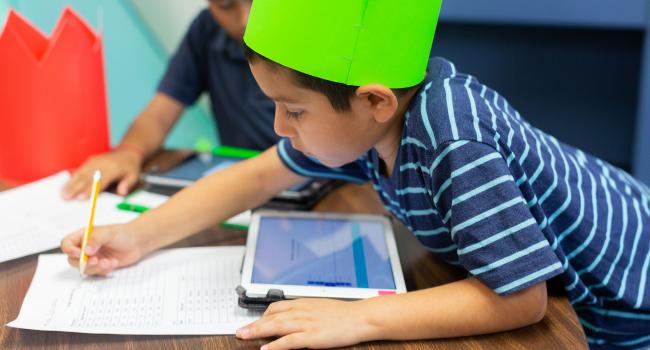Unusual study examines impact of technology on literacy and writing

Many studies are available highlighting the impact of technology on both literacy and writing, but there is a lack of research combining the two areas. That’s where the Ready, Set, Write! program seeks to make an impact.
Ready, Set, Write! is the brainchild of Li-Jen Kuo and Quentin Dixon, associate professors in the Department of Teaching, Learning, and Culture. They worked with doctoral student Stephanie Moody to develop curriculum that focuses on improving writing skills of struggling second grade students.
“We looked at the second grade TEKS set by the state of Texas for writing. We focused on targeting each of the skills the students should be learning throughout the year,” Moody said.
Pre-service teachers from the College of Education and HumanDevelopment spend 10 weeks in three Bryan Independent School District elementary schools: Fannin, Henderson, and Bonham. Over the course of 90 minutes, twice each week, the students go through three centers focused on different tools aimed at improving literacy and writing skills for struggling writers.
The first is spelling and grammar. Through traditional methods like dry erase boards or pencil and paper, students work on lower-level writing processes. They are taught skills such as changing the meaning of a word by adding ed/ing endings.
The second focuses on vocabulary skills. The students are taught words that can be used in writing, such as emotion words. The goal is to get the students thinking about more complex words than those such as happy or sad.
The final center is the technology practice center. Students are taught how to use certain apps related to various writing development tasks and other voice-to-text features.
“One of goals is to use technology in a way that paper and pencil can’t be used,” explained Moody. “It’s not about just typing on a document for the sake of typing, but doing things like recording a story before writing to see if the student’s ideas develop more thoroughly when they’re able to hear themselves speaking and then writing it.”
The day ends with a mini lesson on the writing process including brainstorming, organizing and editing before the students have a chance to work on their final project. By the end of the 10-week program, the students will have created two digital books featuring stories from each student in the class.
This is the final year of funding for Ready, Set, Write! While no data has been analyzed, Moody says she has received positive feedback from principals at all three elementary schools. Should the program be funded again, Moody hopes it can be expanded to include more schools, students and pre-service teachers.

